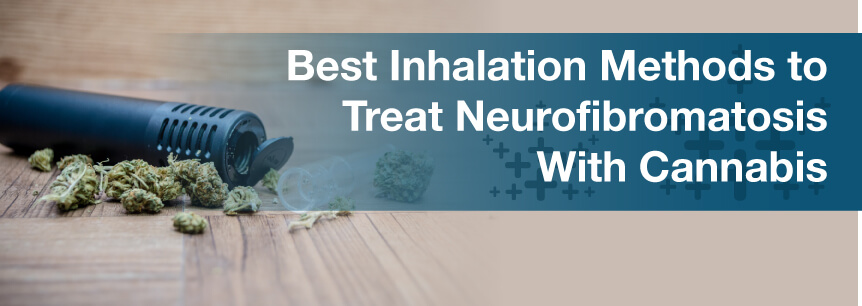
Neurofibromatosis (NF) is a little known yet prolific genetic condition. The condition is caused by the development of benign tumors on nerve tissue. Half the cases of this disorder are inherited from a parent, but spontaneous cases of NF can develop due to gene mutations when no other family member has it. It’s usually caught and diagnosed in early childhood or young adulthood, but even then, there is no cure for neurofibromatosis.
There are three types of NF, each varying in severity and the type of symptoms that develop. NF1, NF2 and schwannomatosis each impact patients in diverse ways, with symptoms ranging from growths and colored spots on the skin to bone deformities and severe pain. Some patients also struggle with emotional symptoms as they come to grips with the intensity of their condition.
Doctors treating NF look to improve their patient’s quality of life, and many are turning to medical marijuana. Not only can it combat several different symptoms, but it’s also safe and has relatively few side effects.
But how should patients with neurofibromatosis take their medical marijuana treatments? There are quite a few ingestion techniques, from edibles and tincture to topical ointments. The most common way to use cannabis is inhalation, either through smoking or vaporization.
Because it works naturally with our body’s endocannabinoid system (ECS), cannabis has many medicinal properties and binds to ECS receptors found in every major bodily system. Doctors have discovered it can help with digestive issues, pain management, emotional health and much more.
For patients with neurofibromatosis, medical marijuana can be used to treat the following:
Inhalation is the most common method patients use to take cannabis medications. It involves the use of an apparatus or device to inhale marijuana smoke or vapor. The primary benefit of inhalation is its speed. When a patient inhales marijuana, it enters the lungs and is released into the bloodstream, allowing them to feel its effects almost instantaneously.
For patients struggling with NF-related pain, quick relief is essential. There are two methods of inhalation: smoking and vaporization.
By far the most common way to use cannabis is to smoke it. There are many different devices that patients can use to make this possible:
Each of these items will give the patient a different effect. However, smoking is not recommended, especially for medical marijuana patients. No matter how you smoke, it involves burning the cannabis. This means you’re not only breathing in the smoke, but you’re also inhaling burning particles.
Although smoking weed doesn’t have the same risks as smoking tobacco, it can still damage your lungs. Common side effects are coughing, breathing difficulties and increased mucus.
Because of the health concerns associated with smoking, vaporization is a safer alternative. Much like smoking, it involves the use of some sort of vaporization apparatus, like:
Instead of burning the cannabis, the plant is brought to the cusp of its combustion point. This releases a vapor that can be inhaled without the dangerous particles produced by burning the marijuana. This method can be easily employed by any age, including children with medical consent.
The only downside of vaping is that vaporizers tend to be more expensive. This is often enough for patients to continue smoking, even at the risk of their lung health. However, vaporizers are a one-time expense that can then be used over and over again.
Our advice shouldn’t replace that of a qualified professional. If you’re debating between different methods of medical marijuana consumption, contact a marijuana doctor or a dispensary near you. They’ll be able to address any questions you have, along with your specific symptoms. They may even have a different recommendation based on the specifics of your condition.